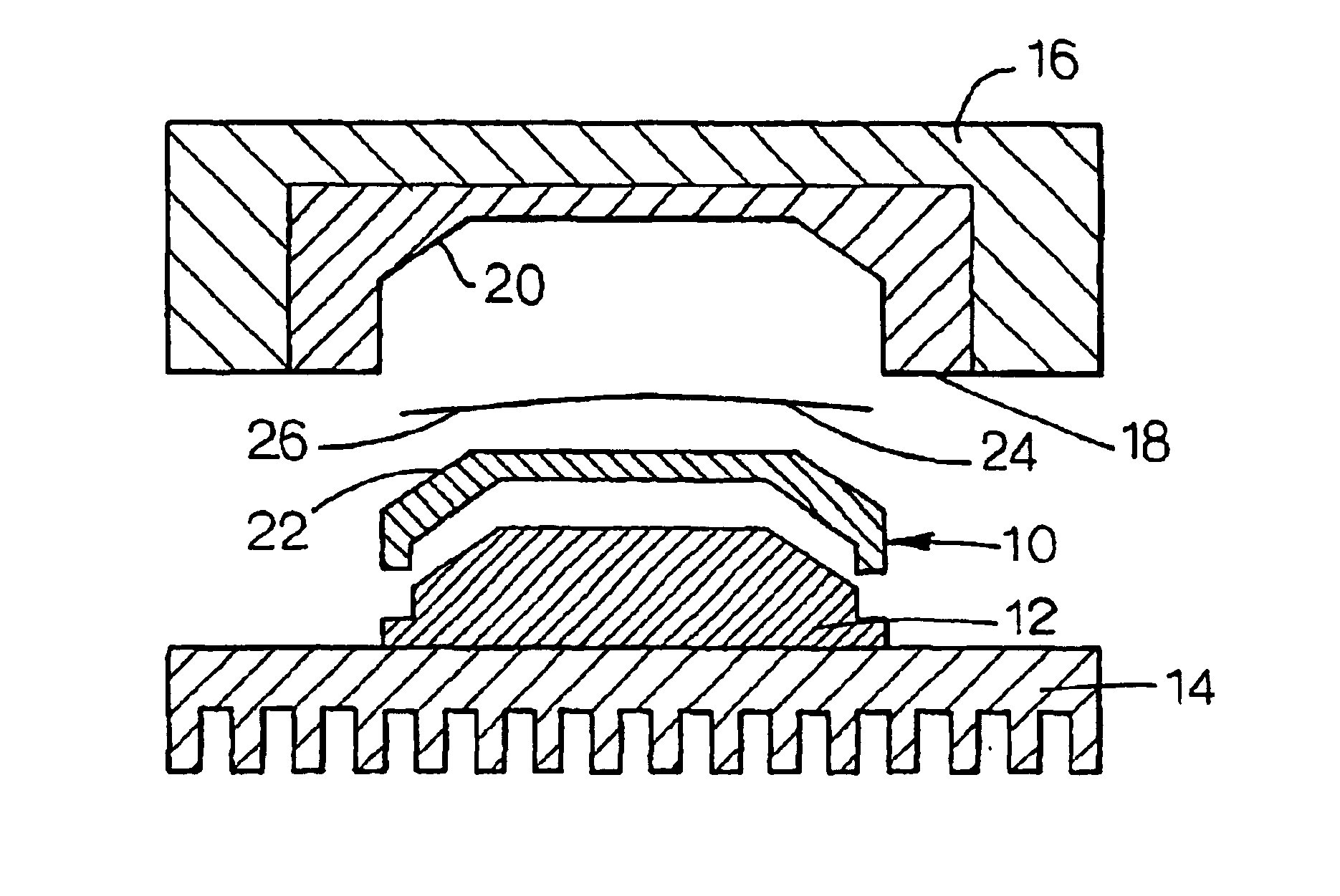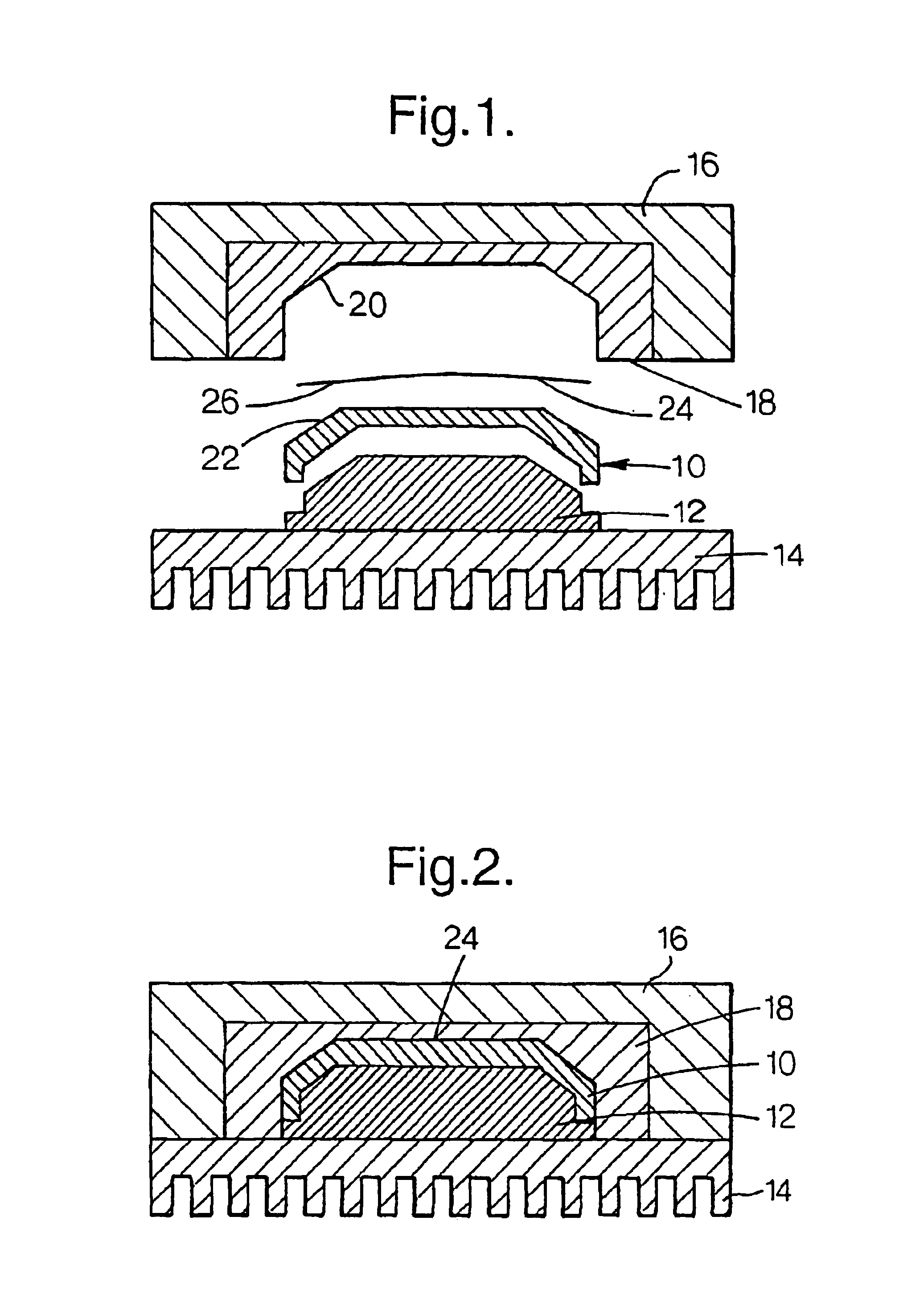Thermal transfer printing
a technology of thermal transfer printing and transfer printing, which is applied in the direction of casings/cabinets/drawers, instruments, casings/cabinets/drawers, etc., can solve the problems of loss of optical density of images, reduction of image sharpness and quality, etc., to prevent plastic material distortion, increase the transfer time, and the effect of optical density loss
- Summary
- Abstract
- Description
- Claims
- Application Information
AI Technical Summary
Benefits of technology
Problems solved by technology
Method used
Image
Examples
example 1
[0063]The ABS / PC polymer articles 10 was coated (by spraying) with the following dye-receptive clear coating formulations.
[0064]1. PPG Clearcoat (PPG Clearcoat is a Trade Mark) paint lacquer having a Tg of 67° C. comprising resin 84-46-0008 (10 g), cross-linking hardening agent 87010002 (5 g), and thinner 89060001 (5 g). The Clearcoat lacquer was made from the 3 components in accordance with the manufacturers instructions.
[0065]The softening point of the ABS / PC (110° C.) was 43° C. higher than the Tg of the PPG Clearcoat paint lacquer. This coated article is not in accordance with the invention, and is included for comparative purposes.
[0066]2. A coated article in accordance with the invention was made using a coating having the following formulation:
[0067]
1.Dynapol LH833 (50%)1.5kg2.Silwet L7710.00g3.Additol XL1237.95g4.Tegomer 27111.98g5.Uvitex OB1.30g6.Tinuvin 1447.90g8.DABCO T120.50g9.Butyl Acetate583.0g
[0068]Dynapol LH833, Silwet L77, Additol XL123, Tegomer 2711, Uvitex OB, Tin...
example 2
[0074]A series of further coatings were prepared, generally similar to coating 2 of Example 1, using Dynapol LH833 as before and also Vylon GK130 (Vylon GK130 is a Trade Mark) which is a low molecular weight, low Tg, hydroxyl functional linear polyester. Coating formulations were as follows:
[0075]
1.Polymer0.75kg2.Silwet L7710.00g3.Additol XL1237.95g4.Tegomer 27111.98g5.Uvitex OB1.30g6.Tinuvin 1447.90g8.DABCO T120.50g9.Butyl Acetate583.0g
[0076]The resin systems were mixed together with PPG isocyanate crosslinking agent 87010002 as used in the previous example to produce cross-linked coatings. Further ABS / PC polymer articles 10 (as used in Example 1) were coated with the cross-linked coating formulations, using a dip coating process in place of spray coating as in Example 1. The coated articles were cured at 90° C. for 50 minutes before being printed by a retransfer printing operation, as described in Example 1.
[0077]The dye retransfer optical densities were measured using a Gretag SP...
PUM
| Property | Measurement | Unit |
|---|---|---|
| softening point | aaaaa | aaaaa |
| softening point | aaaaa | aaaaa |
| Tg | aaaaa | aaaaa |
Abstract
Description
Claims
Application Information
 Login to View More
Login to View More - R&D
- Intellectual Property
- Life Sciences
- Materials
- Tech Scout
- Unparalleled Data Quality
- Higher Quality Content
- 60% Fewer Hallucinations
Browse by: Latest US Patents, China's latest patents, Technical Efficacy Thesaurus, Application Domain, Technology Topic, Popular Technical Reports.
© 2025 PatSnap. All rights reserved.Legal|Privacy policy|Modern Slavery Act Transparency Statement|Sitemap|About US| Contact US: help@patsnap.com


